 Abraham Lincoln
If given the truth, the people can be depended upon to meet any national crisis...
Abraham Lincoln
If given the truth, the people can be depended upon to meet any national crisis...
 Guildford news...
for Guildford people, brought to you by Guildford reporters - Guildford's own news service
Guildford news...
for Guildford people, brought to you by Guildford reporters - Guildford's own news service
Hero Lancer Who Recaptured British Guns From The Enemy
Published on: 21 Aug, 2014
Updated on: 28 Aug, 2014
First World War hero Captain Francis Grenfell VC is being honoured with the laying of a paving stone in his memory in Tunsgate Arch, Guildford, on Sunday morning (August 24). Local historian DAVID ROSE looks into his gallant deeds in the face of the enemy, his family background and a somewhat slender link to our town.
Captain Grenfell was born at Hatchlands, East Clandon, in 1880. The fact that he was born within what is today’s borough of Guildford and his award of the Victoria Cross – the highest military decoration for valour “in the face of the enemy” to British, Commonwealth and former Empire servicemen – qualifies for a paving stone to be laid here in his memory.
These paving stones are a UK-wide scheme “to honour their bravery, to provide a lasting legacy of local heroes within communities and to enable people to gain a greater understanding of how their area fitted into the First World War story”. We can certainly provide such details.
The scheme was launched in August 2013 and local authorities were asked to apply. Guildford Borough Council indentified two recipients who were born in the area of today’s borough and the one being unveiled on Sunday is the first.
It is a commendable scheme and will certainly add focus to the commemorations of the 100th anniversary of the First World War. Although Guildford may like to ‘claim’ Captain Grenfell as he was born at East Clandon, in truth, it’s likely he didn’t spend a lot of time here. I am sorry if this sounds as if I am pouring cold water on the laudable paving stone project, but we can’t ignore historical facts.
Nonetheless, Captain Grenfell’s story is a good one, so read on…
Francis Octavius Grenfell and his twin brother Riversdale Nonus were born to Pascoe St Ledger Grenfell and his wife Sofia on September 4, 1880. They were an extremely wealthy Victorian family, and late 19th century census returns reveal that they appear to have moved around a lot. It is believed that Pascoe and Sofia had a total of 15 children!
On the 1881 census they were listed as resident in London, with Pascoe giving his occupation as an “American merchant”. Noting the places of birth listed with each child, they include London, Kent, Buckingham, with only the twins born in Surrey.
By the 1891 census the family home appears to have been in Beaconsfield in Buckinghamshire.
But back to 1880 and the birth of the twins; I have yet to discover exactly how long they were staying at Hatchlands, but the boys were baptised at East Clandon Church on October 3 that year.
Francis and his twin brother, known as Rivy, went to Eton College. They left in 1899 with Rivy becoming a banker, while Francis joined the Seaforth Highlanders in Egypt and was later commissioned into the Kings Royal Rifle Corps. He served in the Boer War (1899-1902).
The twins were excellent horsemen and enjoyed playing polo. Francis achieved his ambition to be a cavalryman in May 1905 joining the 9th Lancers. At the outbreak of the First World War, Rivy joined his brother having trained with the Bucks Hussars.
They both left for France in August 1914 arriving near Mons in Belgium on the 21st.
It was soon to be the British Expeditionary Force’s (BEF) famous retreat from Mons. Francis was in charge of B Squadron and was soon wounded with his horse shot from under him. However, he continued and his next engagement with the enemy would earn him his VC. This was on August 24, 1914. So the paving stone is being laid 100 years to the day when he earned the medal that is known as given to “the bravest of the brave”. He was the first British officer to be given a VC in the First World War.

The double page spread in the Illustrated War News reporting Captain Grenfell’s heroic deed that won him the Victoria Cross.
The Illustrated War News magazine of September 16, 1914, published a vivid illustration from a sketch by Frederic Villiers of Grenfell’s VC winning deed. The extended caption to the image read: “Captain Grenfell of the 9th Lancers, with a squadron of his troops, retakes a battery of British guns captured by the enemy. All the draught horses had been killed, so he eventually dragged the guns back to the British lines.
“On the left a dismounted Lancer is seen running behind Captain Grenfell, who, in spite of being wounded, pluckily led the charge. It has been suggested that his heroic conduct will probably win him the VC. The guns which he and his men succeeded in recapturing had been taken by the Germans and were in danger of being turned against the British by German gunners.
“The gallant action was one of many performed by our troops in the ‘glorious stand’ of which General French spoke in his memorable dispatch of September 7, in the course of which, it will be remembered, he said that ‘the movement was covered with the most devoted intrepidity and determination by the Artillery, which had itself suffered severly, and the fine work done by the cavalry in the further retreat from the position assisted materially in the final completion of this most difficult and dangerous operation’. The charge led by Captain Grenfell for the recovery of the guns has been likened to that of the Light Brigade at Balaclava. His regiment, the 9th Lancers, covered themselves with glory in the fighting against the German right wing.”
Francis was brought back to England to recover from his wounds and while convalescing heard that Rivy had been shot and killed on September 14, 1914,
In October 1914 Francis returned to France and took command of B Squadron. But he was soon wounded and again returned to England.
He was back in the midst of the fighting in April 1915, but his luck was soon to run out. He was shot and died on May 24, during the Second Battle of Ypres. It was a day in which the 9th Lancers suffered 208 casualties out of the 350 men who went into battle.
Captain Grenfell was buried at Vlamertinghe Military Cemetery, Ypres.
The paving stone being unveiled on Sunday August 24 in Tunsgate Arch at 11am following a 10 am service at Holy Trinity Church.
It is expected that 20 members of the Grenfell family will be attending. Nine members of the 9th/12th Lancers Prince of Wales’s Regiment will arrive from Germany with Captain Grenfell’s medals to also attend the ceremony.
It is not the first memorial to this Great War hero. He and his twin brother are commemorated at Canterbury Cathedral and on a stained glass window at Beaconsfield’s parish church.
Although Captain Grenfell probably never walked down Guildford High Street in his short life, the memorial will be a fitting tribute to a very brave man.
Responses to Hero Lancer Who Recaptured British Guns From The Enemy
Leave a Comment Cancel replyPlease see our comments policy. All comments are moderated and may take time to appear.
Recent Articles
- Guildford Institute’s Crowdfunding Project for Accessible Toilet in its New Community and Wellbeing Centre
- Letter: Guildford – Another Opportunity Missed?
- Letter: GBC’s Corporate Strategy – Where Is the Ambition?
- My Memories of John Mayall at a Ground-breaking Gig in Guildford Nearly Six Decades Ago
- Westborough HMO Plans ‘Losing the Heart of the Street’ Says Resident
- College Invests to Boost Surrey’s Economy and Close Digital Skills Gap
- Community Lottery Brings Big Wins for Local Charities
- GBC Housing Plan Promises ‘A Vibrant Urban Neighbourhood’ Near Town Centre
- Hospital Pillows ‘Shortage’ at the Royal Surrey
- Updated: Caravans Set Up Camp at Ash Manor School


Recent Comments
- Ian Macpherson on Updated: Main Guildford to Godalming Road Closed Until August 1
- Sara Tokunaga on GBC Housing Plan Promises ‘A Vibrant Urban Neighbourhood’ Near Town Centre
- Michael Courtnage on Daily Mail Online Reports Guildford Has Highest-paid Council Officer
- Alan Judge on GBC Housing Plan Promises ‘A Vibrant Urban Neighbourhood’ Near Town Centre
- John Perkins on GBC Housing Plan Promises ‘A Vibrant Urban Neighbourhood’ Near Town Centre
- S Collins on GBC Housing Plan Promises ‘A Vibrant Urban Neighbourhood’ Near Town Centre
Search in Site
Media Gallery
Dragon Interview: Local Artist Leaves Her Mark At One of England’s Most Historic Buildings
January 21, 2023 / No Comment / Read MoreDragon Interview: Lib Dem Planning Chair: ‘Current Policy Doesn’t Work for Local People’
January 19, 2023 / No Comment / Read MoreA3 Tunnel in Guildford ‘Necessary’ for New Homes, Says Guildford’s MP
January 10, 2023 / No Comment / Read More‘Madness’ for London Road Scheme to Go Ahead Against ‘Huge Opposition’, Says SCC Leader
January 6, 2023 / No Comment / Read MoreCouncillor’s Son Starts Campaign for More Consultation on North Street Plan
December 30, 2022 / No Comment / Read MoreCounty Council Climbs Down Over London Road Works – Further ‘Engagement’ Period Announced
December 14, 2022 / No Comment / Read MoreDragon Interview: GBC Reaction to the Government’s Expected Decision to Relax Housing Targets
December 7, 2022 / No Comment / Read MoreHow Can Our Town Centre Businesses Recover? Watch the Shop Front Debate
May 18, 2020 / No Comment / Read More



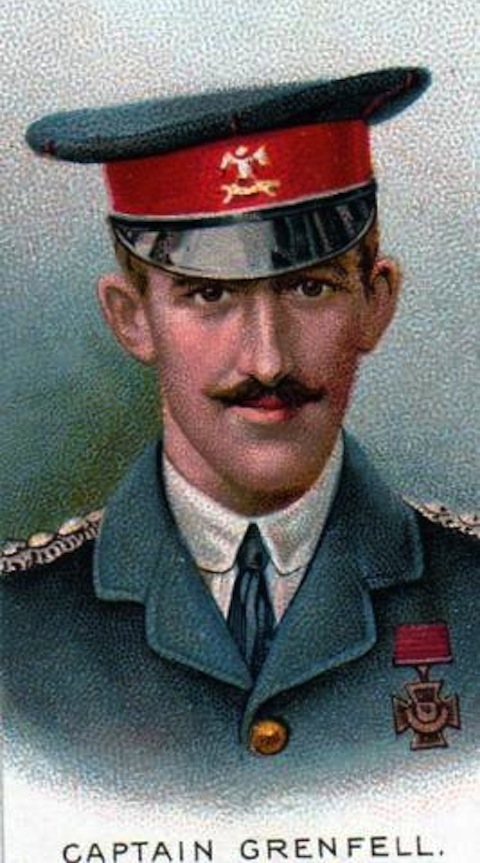
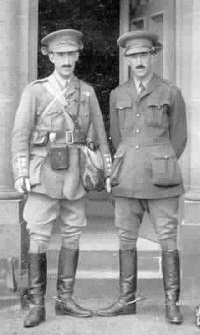
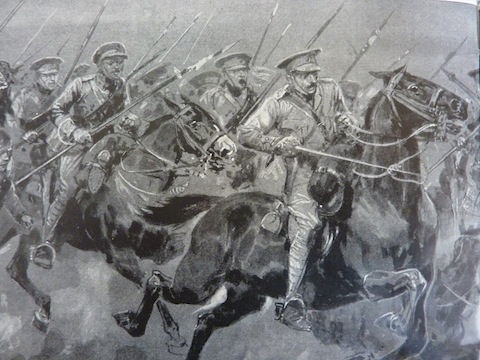

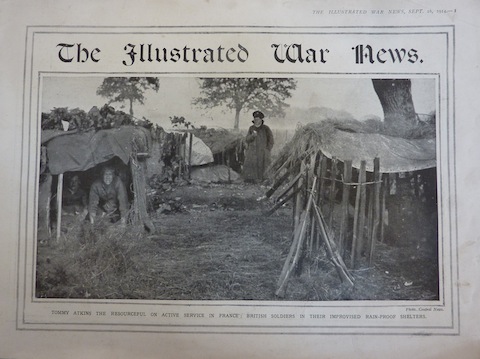
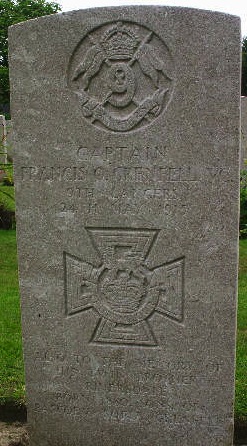






Charlie Eve
August 22, 2014 at 3:27 pm
I would argue that Maurice Dease of the Royal Fusiliers was the first officer to be awarded the VC after the action at Nimy Bridge, Mons on 23rd August…. Although my guess is he may have been gazetted after Grenfell.
[David Rose: I think you are right, Grenfell gets the credit by being gazetted first.]
Mary Bedforth
August 22, 2014 at 3:43 pm
I liked Joyce Grenfell very much. She had an excellent sense of humour. She was probably related to the Grenfell twins by marriage.
‘In 1927, she met Reginald Pascoe Grenfell (1903–1993). They were married two years later at St Margaret’s, Westminster, and remained married for 50 years (until her death).’
http://en.wikipedia.org/wiki/Joyce_Grenfell